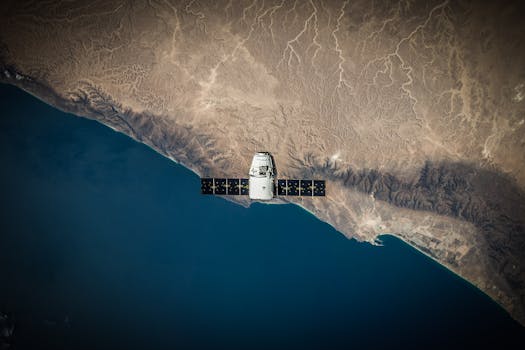
MEO Satellites: Introduction to Medium Earth Orbit Technology
MEO satellites, or Medium Earth Orbit satellites, are a type of satellite that operates in an orbit between 2,000 and 36,000 kilometers above the Earth’s surface. This orbit is higher than Low Earth Orbit (LEO) satellites but lower than Geostationary Orbit (GEO) satellites. MEO satellites are designed to provide a balance between the benefits of LEO and GEO satellites, offering a wider coverage area and higher elevation angles than LEO satellites, while also having a lower latency and being less expensive than GEO satellites.
Benefits and Applications of MEO Satellites
MEO satellites have several benefits and applications that make them an attractive option for various industries. One of the main advantages of MEO satellites is their ability to provide global coverage with a smaller number of satellites compared to LEO satellites. This makes them a more cost-effective option for providing broadband internet, voice, and data services to remote and underserved areas. MEO satellites are also used for navigation, such as in the Global Positioning System (GPS), and for Earth observation, such as in weather forecasting and environmental monitoring.
MEO satellites are also being used for satellite-based communications, such as in the provision of backhaul services for mobile networks and for providing connectivity to areas where fiber optic cables are not available. The use of MEO satellites for 5G and IoT applications is also being explored, as they can provide the necessary bandwidth and low latency required for these services.
Challenges and Limitations of MEO Satellites
While MEO satellites offer several benefits and applications, they also have some challenges and limitations. One of the main challenges is the higher launch cost compared to LEO satellites, which can make them less attractive to some operators. Additionally, MEO satellites have a higher risk of interference from other satellites and terrestrial systems, which can affect their performance and availability.
Another limitation of MEO satellites is their lower elevation angle compared to GEO satellites, which can result in a lower signal strength and a higher risk of signal blockage. However, this can be mitigated by using advanced antenna technologies and signal processing techniques.
Future of MEO Satellites
The future of MEO satellites looks promising, with several new constellations and systems being planned and launched. The use of MEO satellites for 5G and IoT applications is expected to grow, as they can provide the necessary bandwidth and low latency required for these services. Additionally, the development of new technologies, such as advanced antenna systems and signal processing techniques, is expected to improve the performance and availability of MEO satellites.
In conclusion, MEO satellites are a vital part of the satellite industry, offering a balance between the benefits of LEO and GEO satellites. Their ability to provide global coverage, lower latency, and higher elevation angles makes them an attractive option for various industries, including satellite-based communications, navigation, and Earth observation. As the demand for satellite-based services continues to grow, the use of MEO satellites is expected to increase, driving innovation and development in the satellite industry.



